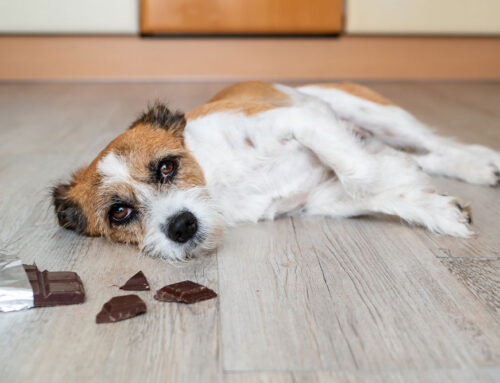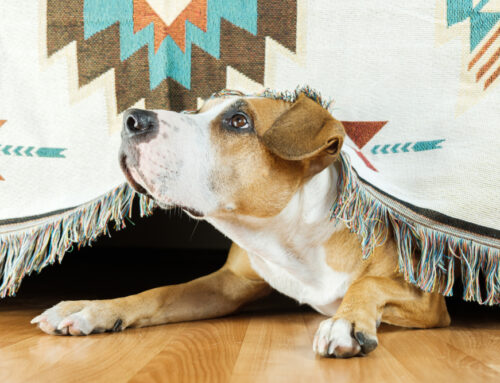Why Is My Pet Suddenly Refusing to Eat? Understanding Appetite Loss in Pets
When your pet suddenly turns away from their food, it can be a source of concern for any pet owner. Pets thrive on routine, and mealtime is a pivotal part of their day. A change in appetite often signals that something isn’t quite right. While some causes of appetite loss are minor and temporary, others may indicate underlying health issues that require veterinary attention. Knowing when to be concerned and understanding why your pet might lose interest in food can help you address the issue more effectively and ensure your pet’s health.
Understanding Appetite Loss in Pets
Appetite loss in pets can result from a wide range of factors, from minor discomfort to serious medical conditions. Differentiating between these causes can help you determine the appropriate action and provide your pet with the care they need.
Every pet is different! A labrador puppy skipping his food is not the same as an elderly poodle missing his breakfast. Here’s a closer look at some common causes and what each might indicate.
Common Causes of Appetite Loss
Minor Causes:
Pets may experience temporary appetite loss due to minor or environmental changes. Stress is a common factor; moving to a new home, adding a new family member, or even rearranging furniture can impact a pet’s willingness to eat. Some pets, especially cats, are very sensitive to change and may require time to adjust.
Another common minor cause is the introduction of new food. Pets, especially picky eaters, may reject an unfamiliar flavor or texture, even if it’s a high-quality food designed for their health. Opening a new bag of the same brand could also bring subtle changes in taste, which some pets may notice.
One reason that is both funny and frustrating is when your pet trains you. By feeding lots of treats or scraps from your own plate, your pet may start to expect something different-and better- than their normal cuisine. Some will go on a food strike hoping that you’ll feel bad and give them something special. Don’t let cute faces and sad eyes con you into providing more treats and scraps!
Moderate Causes:
In some cases, a loss of appetite may result from moderate issues that require veterinary attention. Dental problems, for instance, are a significant cause of reduced appetite. Conditions such as gum disease, broken teeth, or infections can make chewing painful, leading your pet to avoid food altogether. Regular dental check-ups are essential to identifying these issues early, as untreated dental problems can lead to chronic discomfort and difficulty eating.
Gastrointestinal discomfort is another moderate cause, which can stem from a range of issues, including mild indigestion, constipation, or an upset stomach. If your pet shows signs of nausea, such as lip licking or swallowing excessively, it’s worth observing them closely and seeking veterinary advice if the symptoms persist.
Serious Causes:
A more prolonged loss of appetite can signal severe health conditions, such as organ dysfunction (kidney or liver disease), which can affect the desire to eat. Chronic pain or adverse reactions to medications, as well as the presence of conditions like cancer, may also lead to a diminished interest in food. If your pet refuses food for more than a couple of days, particularly if they display other signs such as lethargy, weight loss, or vomiting, consult a veterinarian promptly. These symptoms can indicate underlying health problems that require urgent attention.

Tips to Encourage Your Pet to Eat
While addressing the root cause of your pet’s appetite loss is always best, there are strategies you can try at home to make mealtime more appealing. These tips can help your pet regain interest in food, ensuring they get the nutrition they need.
- Transition to New Food Gradually
A sudden switch in diet can upset a pet’s stomach and result in temporary disinterest in eating. To ease the transition, mix the new food with their regular food, gradually increasing the proportion of the new food over one to two weeks. This process helps your pet adjust to new flavors and textures without digestive upset, making it easier for them to accept the change. - Enhance Food Palatability
Improving the flavor and aroma of your pet’s food can make a difference, especially if they’re unenthused by the usual meal. Warming canned food slightly or adding a small amount of low-sodium broth can release aromas that might entice your pet. For pets with dental issues, warming the food also softens it, making it easier to chew and swallow. You can also consider adding food toppers from pet stores, designed to boost flavor and encourage picky eaters to eat. - Establish a Consistent Feeding Routine
Routine helps pets feel secure and encourages regular eating habits. Try feeding your pet at the same times each day and limit how long their food is left out. Removing food after 20-30 minutes if they haven’t eaten can create a sense of mealtime structure, helping prevent finicky eating behaviors. Consistent feeding routines are particularly helpful for pets who thrive on predictability. Hand feeding your pet, or eating dinner at the same time as your pet, can also help encourage those who are reluctant to eat on their own- some pets are “social eaters”. - Create a Calm Feeding Environment
For some pets, especially cats, a calm and quiet feeding area is essential. Loud noises, crowded spaces, or other animals can make them anxious, leading them to avoid food. If possible, create a quiet space for meals, away from household activities and other pets. Giving your pet their own feeding zone can help reduce stress and improve mealtime engagement. - Try Food Puzzles or Interactive Feeders
Interactive feeders and food puzzles can make eating more engaging for pets, especially those who enjoy mental stimulation. These tools not only encourage pets to eat but also provide mental enrichment, turning mealtime into an enjoyable activity. Food puzzles are particularly useful for pets who may have grown bored with their usual routine, as they create a rewarding experience around eating.
When to Seek Veterinary Attention
While some cases of appetite loss are temporary, there are times when it’s essential to seek veterinary care. If your pet hasn’t eaten for more than 24 hours, or if they show additional symptoms like vomiting, diarrhea, lethargy, or sudden weight loss, it’s time to consult a veterinarian. We can perform diagnostics in the hospital to help get answers fast. These symptoms may indicate a more serious condition that requires prompt attention.
Don’t Ignore Appetite Changes
Changes in appetite should never be overlooked. While appetite loss can stem from minor causes, it can also signal significant health issues. Early intervention is crucial for identifying and addressing any underlying problems, ensuring your pet stays healthy and happy. Monitoring your pet’s eating habits and seeking professional advice when needed can make a lasting difference in their well-being. Have questions? Contact us!







Leave A Comment